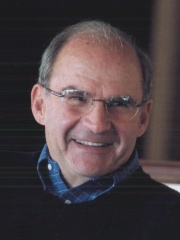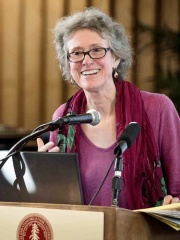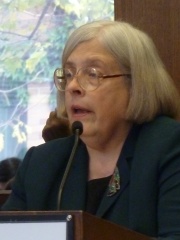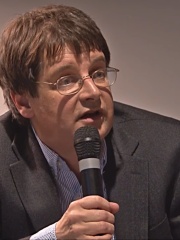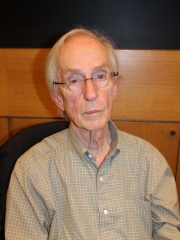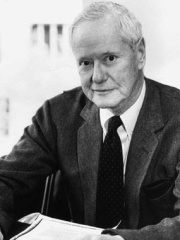
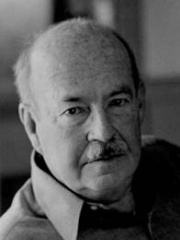
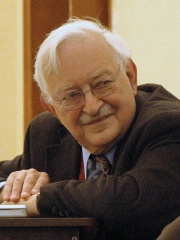
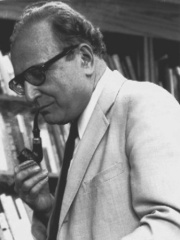
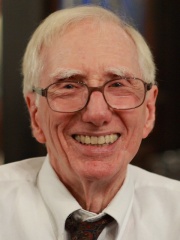
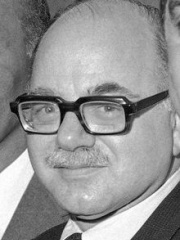

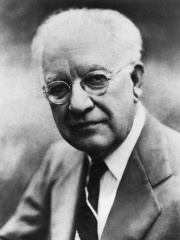
The Most Famous
SOCIOLOGISTS from United States
This page contains a list of the greatest American Sociologists. The pantheon dataset contains 79 Sociologists, 27 of which were born in United States. This makes United States the birth place of the most number of Sociologists.
Top 10
The following people are considered by Pantheon to be the top 10 most legendary American Sociologists of all time. This list of famous American Sociologists is sorted by HPI (Historical Popularity Index), a metric that aggregates information on a biography's online popularity. Visit the rankings page to view the entire list of American Sociologists.

1. Robert K. Merton (1910 - 2003)
With an HPI of 76.49, Robert K. Merton is the most famous American Sociologist. His biography has been translated into 47 different languages on wikipedia.
Robert King Merton (born Meyer Robert Schkolnick; July 4, 1910 – February 23, 2003) was an American sociologist who is considered a founding father of modern sociology, and a major contributor to the subfield of criminology. He served as the 47th president of the American Sociological Association. He spent most of his career teaching at Columbia University, where he attained the rank of University Professor. In 1994 he was awarded the National Medal of Science for his contributions to the field and for having founded the sociology of science. Merton's contribution to sociology falls into three areas: (1) sociology of science; (2) sociology of crime and deviance; (3) sociological theory. He popularized notable concepts, such as "unintended consequences", the "reference group", and "role strain", but is perhaps best known for the terms "role model" and "self-fulfilling prophecy". The concept of self-fulfilling prophecy, which is a central element in modern sociological, political, and economic theory, is one type of process through which a belief or expectation affects the outcome of a situation or the way a person or group will behave. More specifically, as Merton defined, "the self-fulfilling prophecy is, in the beginning, a false definition of the situation evoking a new behavior, which makes the originally false conception come true". Merton's term "role model" first appeared in a study on the socialization of medical students at Columbia University. The term grew from the concept of the reference group, the group to which individuals compare themselves but to which they do not necessarily belong. Social roles were central to the theory of social groups. Merton emphasized that, rather than a person assuming just one role and one status, they have a status set in the social structure that has, attached to it, a whole set of expected behaviors.

2. Talcott Parsons (1902 - 1979)
With an HPI of 73.67, Talcott Parsons is the 2nd most famous American Sociologist. His biography has been translated into 54 different languages.
Talcott Parsons (December 13, 1902 – May 8, 1979) was an American sociologist of the classical tradition, best known for his social action theory and structural functionalism. Parsons is considered one of the most influential figures in sociology in the 20th century. After earning a PhD in economics, he served on the faculty at Harvard University from 1927 to 1973. In 1930, he was among the first professors in its new sociology department. Later, he was instrumental in the establishment of the Department of Social Relations at Harvard. Based on empirical data, Parsons' social action theory was the first broad, systematic, and generalizable theory of social systems developed in the United States and Europe. Some of Parsons' largest contributions to sociology in the English-speaking world were his translations of Max Weber's work and his analyses of works by Weber, Émile Durkheim, and Vilfredo Pareto. Their work heavily influenced Parsons' view and was the foundation for his social action theory. Parsons viewed voluntaristic action through the lens of the cultural values and social structures that constrain choices and ultimately determine all social actions, as opposed to actions that are determined based on internal psychological processes. Although Parsons is generally considered a structural functionalist, towards the end of his career, in 1975, he published an article that stated that "functional" and "structural functionalist" were inappropriate ways to describe the character of his theory. From the 1970s on, a new generation of sociologists criticized Parsons' theories as socially conservative and his writings as unnecessarily complex. Sociology courses have placed less emphasis on his theories than at the peak of his popularity (from the 1940s to the 1970s). However, there has been a recent resurgence of interest in his ideas. Parsons was a strong advocate for the professionalization of sociology and its expansion in American academia. He was elected president of the American Sociological Association in 1949 and served as its secretary from 1960 to 1965.

3. Immanuel Wallerstein (1930 - 2019)
With an HPI of 71.29, Immanuel Wallerstein is the 3rd most famous American Sociologist. His biography has been translated into 41 different languages.
Immanuel Maurice Wallerstein (; September 28, 1930 – August 31, 2019) was an American sociologist and economic historian. He is perhaps best known for his development in sociology of world-systems approach. He was a Senior Research Scholar at Yale University from 2000 until his death in 2019, and published bimonthly syndicated commentaries through Agence Global on world affairs from October 1998 to July 2019. He was the 13th president of International Sociological Association (1994–1998).

4. Seymour Martin Lipset (1922 - 2006)
With an HPI of 69.18, Seymour Martin Lipset is the 4th most famous American Sociologist. His biography has been translated into 30 different languages.
Seymour Martin Lipset ( LIP-sit; March 18, 1922 – December 31, 2006) was an American sociologist and political scientist. His major work was in the fields of political sociology, trade union organization, social stratification, public opinion, and the sociology of intellectual life. He also wrote extensively about the conditions for democracy in comparative perspective. He was president of both the American Political Science Association (1979–1980) and the American Sociological Association (1992–1993). A socialist in his early life, Lipset later moved to the right, and was considered to be one of the first neoconservatives. At his death in 2006, The Guardian called him "the leading theorist of democracy and American exceptionalism"; The New York Times labeled him "a pre-eminent sociologist, political scientist and incisive theorist of American uniqueness" and The Washington Post reported that he was "one of the most influential social scientists of the past half century."
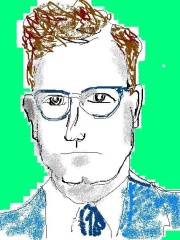
5. C. Wright Mills (1916 - 1962)
With an HPI of 68.01, C. Wright Mills is the 5th most famous American Sociologist. His biography has been translated into 46 different languages.
Charles Wright Mills (August 28, 1916 – March 20, 1962) was an American sociologist, and a professor of sociology at Columbia University from 1946 until his death in 1962. Mills published widely in both popular and intellectual journals, and is remembered for several books, such as The Power Elite, White Collar: The American Middle Classes, and The Sociological Imagination. Mills was concerned with the responsibilities of intellectuals in post–World War II society, and he advocated public and political engagement over disinterested observation. One of Mills's biographers, Daniel Geary, writes that Mills's writings had a "particularly significant impact on New Left social movements of the 1960s era." It was Mills who popularized the term "New Left" in the U.S., in a 1960 open letter "Letter to the New Left".

6. Robert N. Bellah (1927 - 2013)
With an HPI of 65.25, Robert N. Bellah is the 6th most famous American Sociologist. His biography has been translated into 23 different languages.
Robert Neelly Bellah (February 23, 1927 – July 30, 2013) was an American sociologist and the Elliott Professor of Sociology at the University of California, Berkeley. He was internationally known for his work related to the sociology of religion.

7. Daniel Bell (1919 - 2011)
With an HPI of 65.05, Daniel Bell is the 7th most famous American Sociologist. His biography has been translated into 37 different languages.
Daniel Bell (May 10, 1919 – January 25, 2011) was an American sociologist, writer, editor, and professor at Harvard University, best known for his contributions to the study of post-industrialism. He has been described as "one of the leading American intellectuals of the postwar era". His three best known works are The End of Ideology (1960), The Coming of Post-Industrial Society (1973), and The Cultural Contradictions of Capitalism (1976).

8. Harold Garfinkel (1917 - 2011)
With an HPI of 64.55, Harold Garfinkel is the 8th most famous American Sociologist. His biography has been translated into 29 different languages.
Harold Garfinkel (October 29, 1917 – April 21, 2011) was an American sociologist and ethnomethodologist, who taught at the University of California, Los Angeles. Having developed and established ethnomethodology as a field of inquiry in sociology, he is probably best known for Studies in Ethnomethodology (1967), a collection of articles. Selections from unpublished materials were later published in two volumes: Seeing Sociologically and Ethnomethodology's Program. Moreover, during his time at University of Newark, which became Rutgers University, he enrolled in Theory of Accounts, a course that covered accounting and bookkeeping procedures. Where from this class "even in setting up an accounting sheet, he was theorizing the various categories into which the numbers would be placed" which furthered his understanding of accountability.

9. Robert E. Park (1864 - 1944)
With an HPI of 64.17, Robert E. Park is the 9th most famous American Sociologist. His biography has been translated into 25 different languages.
Robert Ezra Park (February 14, 1864 – February 7, 1944) was an American urban sociologist who is considered to be one of the most influential figures in early U.S. sociology. Park was a pioneer in the field of sociology, changing it from a passive philosophical discipline to an active discipline rooted in the study of human behavior. He made significant contributions to the study of urban communities, race relations and the development of empirically grounded research methods, most notably participant observation in the field of criminology. From 1905 to 1914, Park worked with Booker T. Washington at the Tuskegee Institute. After Tuskegee, he taught at the University of Chicago from 1914 to 1933, where he played a leading role in the development of the Chicago School of sociology. Park is noted for his work in human ecology, race relations, human migration, cultural assimilation, social movements, and social disorganization He played a large role in defining sociology as a natural science and challenged the belief that sociology is a moral science. He saw sociology as "...a point of view and a method for investigating the processes by which individuals are inducted into and induced to cooperate in some sort of permanent corporate existence, society."
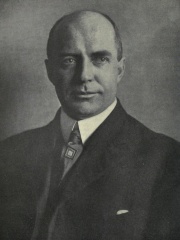
10. W. I. Thomas (1863 - 1947)
With an HPI of 64.07, W. I. Thomas is the 10th most famous American Sociologist. His biography has been translated into 23 different languages.
William Isaac Thomas (August 13, 1863 – December 5, 1947) was an American sociologist, understood today as a key figure behind the theory of symbolic interactionism. Collaborating with Polish sociologist Florian Znaniecki, Thomas developed and influenced the use of empirical methodologies in sociological research and contributed theories to the sociology of migration. Thomas went on to formulate a fundamental principle of sociology, known as the Thomas theorem, whereby he would contend that "if men define situations as real, they are real in their consequences." This microsociological concept served as a theoretical foundation for the field of symbolic interactionism which was developed by Thomas's younger peers—primarily at the University of Chicago.
People
Pantheon has 27 people classified as American sociologists born between 1863 and 1953. Of these 27, 7 (25.93%) of them are still alive today. The most famous living American sociologists include Mark Granovetter, Randall Collins, and George Ritzer. The most famous deceased American sociologists include Robert K. Merton, Talcott Parsons, and Immanuel Wallerstein.
Living American Sociologists
Go to all RankingsMark Granovetter
1943 - Present
HPI: 60.35
Randall Collins
1941 - Present
HPI: 59.15
George Ritzer
1940 - Present
HPI: 58.11
Arlie Russell Hochschild
1940 - Present
HPI: 57.08
Jeffrey C. Alexander
1947 - Present
HPI: 56.61
Theda Skocpol
1947 - Present
HPI: 54.67
John Bellamy Foster
1953 - Present
HPI: 49.07
Deceased American Sociologists
Go to all RankingsRobert K. Merton
1910 - 2003
HPI: 76.49
Talcott Parsons
1902 - 1979
HPI: 73.67
Immanuel Wallerstein
1930 - 2019
HPI: 71.29
Seymour Martin Lipset
1922 - 2006
HPI: 69.18
C. Wright Mills
1916 - 1962
HPI: 68.01
Robert N. Bellah
1927 - 2013
HPI: 65.25
Daniel Bell
1919 - 2011
HPI: 65.05
Harold Garfinkel
1917 - 2011
HPI: 64.55
Robert E. Park
1864 - 1944
HPI: 64.17
W. I. Thomas
1863 - 1947
HPI: 64.07
Herbert Blumer
1900 - 1987
HPI: 62.60
Howard S. Becker
1928 - 2023
HPI: 62.15
Overlapping Lives
Which Sociologists were alive at the same time? This visualization shows the lifespans of the 20 most globally memorable Sociologists since 1700.



